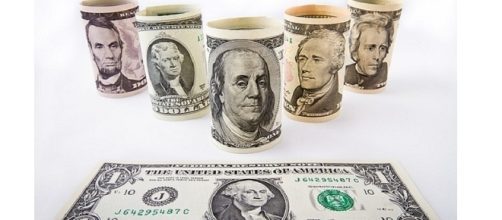The U.S economy is the world's largest economy by nominal GDP. Its per capita is the seventh largest in the world. The U.S dollar is the most used currency in settling international transactions. Most purchases of oil are made in dollars while most countries foreign exchange reserves are also in dollars; this has enabled the U.S economy to grow and increase its robustness.
U.S unemployment and wage levels
The level of unemployment is the most useful indicator that will help economist know how members of the society are performing financially. Currently, the U.S unemployment rate stands at 4.4 percent; this rate is low compared to Canada's unemployment rate of 6.6 percent.
Eurozone's unemployment rate stands at 7.7 percent. Government programs such as Economic stimulus programs have brought down the unemployment rate to 4.4 percent. Youth unemployment was 8.9 percent in August last month from highs of 19 percent in 2010. With low unemployment rate, the number of dependencies reduces while most members of the society can easily cater for their costs of living. Average wages per hour stood at 22.12 dollars per hour according to trade economics.
Low inflation and borrowing costs
Year-on-year inflation in August currently stood at 1.9 percent. The countries inflation rate has been below 2 percent since 2012 when formed federal reserve chairman Ben Bernanke set 2 percent as its inflation targets.
Low inflation ensures that prices of goods and services purchased by consumers is low. Inflation targets ensure that inflation is stable. With low inflation, the currency does not devalue --- a risk that might increase manufacturing costs and cost of living.
Yields on 30-year U.S government bonds stand at 2.9 percent from highs of 4.7 percent in early 2010. In the year 2014, the U.S government paid an interest rate of 2.42 percent on its debt from 4.5 percent in 2008. Low borrowing allows the United States to efficiently source and repay loans for its current and development expenditure.
U.S economic growth
The U.S economy increased by 2.2 percent in the second quarter of this year. First quarter GDP growth stood at 2 percent while in the last quarter of last year, growth was 1.8 percent.
This rate is higher when compared to economies such as Eurozone, Canada, United Kingdom and Japan. Second quarter growth for Canada's economy this year was 1.1 percent, the eurozone economy increased by 0.6 percent in the second quarter of this year. Second quarter growth for Japan and the United Kingdom was 0.6 % and 0.3 % respectively. High U.S growth rate indicates that consumers, businesses, and the government are spending more, and that production is robust.


